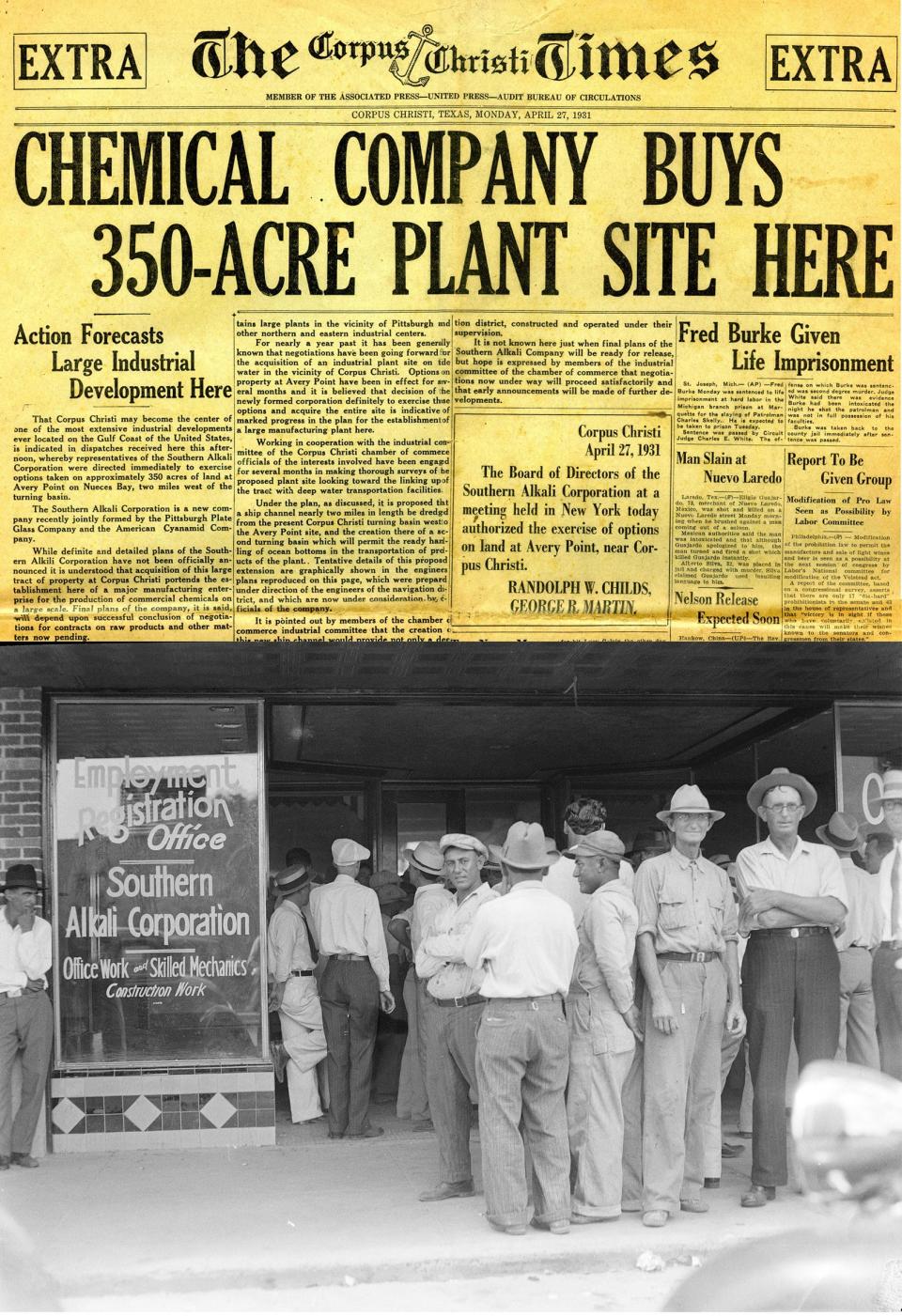#TBT: Corpus Christi's chemical industry sector began in 1934 with Southern Alkali
In 1931, Corpus Christi received welcome news in the depths of the Great Depression: a new industry was headed for the area.
Southern Alkali was a corporation created by the Pittsburgh Plate Glass company and the American Cyanamid company to open a manufacturing plant in the south for soda ash and caustic soda. They sought locations for a new plant in the far south. Corpus Christi went on the shortlist and was the ultimate choice.
Chemical investment banker Col. Frederick Pope had visited Corpus Christi in 1928, heading to Duval County to see the Palangana salt dome. Maston Nixon, the chair of the Chamber of Commerce's industrial committee, wrote in a series of recollections in 1964 how Pope realized the city's potential in the chemical manufacturing industry.
"Returning to Corpus Christi, he saw a discovery gas well on the Dunn property. That sparked his mind with the idea that here was a deep water port with cheap natural gas at its door."
On April 27, 1931, the city flew a green flag on the bluff in downtown. The flag was suspended between the Plaza Hotel and Nixon Building, a symbol of success the city displayed when good economic news came up.
More: #TBT: Nueces County Courthouse was state showpiece in 1914
The city had a few industries at this point, mainly tied to agriculture like farming and ranching. So the addition of the chemical plant was a boon for a workers struggling along during the Great Depression.
Men lined up outside the hiring office on Leopard Street, next to signs advertising positions for office jobs, skilled mechanics and construction workers.
Southern Alkali built its new plant on 389 acres of land next to the Avery Point Turning Basin in the Corpus Christi Ship Channel. Construction began in the summer of 1933 and proceeded rapidly.
The $7 million-plant began operating Sept. 1, 1934, and by late October was shipping products, up to 500 tons a day, to locations around the world. Soda ash and caustic ash is used in the manufacture of glass, soap and detergents, textiles, paper, leather, paints and other chemical products.
Southern Alkali brought salt from the mine in Duval County, limestone from around San Antonio and New Braunfels, and oyster shells from Nueces Bay to create the alkali products, and the plant was powered by natural gas, considered an unneeded byproduct of the burgeoning oil industry.

“The building of Southern Alkali under any circumstances would make a thrilling story. Built as it has been in the very teeth of the worst economic depression the world has ever seen gives to it the romance which surrounds all deeds of heroic endeavor which have been accomplished against overwhelming odds,” said The Crow’s Nest column of Oct. 26, 1934.
Included in that issue of the Caller-Times was a huge special section, 96 pages, called the Industrial Edition highlighting new and old commercial ventures in the area. Southern Alkali had its own 12-page section, with reams of background details on the creation of the plant and its plans for the future. There was even an article on the history of soda ash.
Oct. 26 marked the official opening of the plant, with an “informal celebration” planned that included a tour of the new facility, a trip through the ship channel to the Aransas Pass jetties and back on the USS Saranac, a barbecue at Santa Gertrudis ranch, and two banquets (informal, indeed).
More: #TBT: Corpus Christi got brush with presidential politics in 1980
The plant was a boon for the area, first employing 250 workers and eventually expanding to more than 700 by the 1970s. The plant changed names − Columbia Southern Chemical Corp., then to PPG Industries.
When natural gas prices soared in the late ‘70s, PPG sold the plant to London-based Harrison’s & Crofield Ltd., which operated under the name American Chrome & Chemicals. The plant is now known as Elementis Chromium, and is still operating surrounded by the manufacturing industry it kicked off in the 1930s.
Allison Ehrlich writes about things to do in South Texas and has a weekly Throwback Thursday column on local history.
This article originally appeared on Corpus Christi Caller Times: Corpus Christi's chemical industry began in 1934 with Southern Alkali

